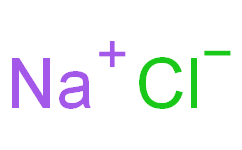Title:Synergistic Inhibition between o-Phenanthroline and Chloride Ion on Cold Rolled Steel Corrosion in Phosphoric Acid
标题:邻菲罗啉和氯离子在磷酸中对冷轧钢腐蚀的协同抑制作用
Authors: Guan Nan Mu, Xueming Li, Fei Li
作者: 穆冠南, 李雪明, 李飞
Journal: Materials Chemistry and Physics
期刊: 《材料化学与物理》
Volume: 86, Issue: 1, Pages: 59-68, Publication Date: 15 July 2004
卷号: 86, 期号: 1, 页码: 59-68, 出版日期: 2004年7月15日
DOI: 10.1016/j.matchemphys.2004.01.041
Abstract
The study explores the combined inhibitory effects of o-phenanthroline and chloride ions on the corrosion of cold rolled steel in phosphoric acid. Various techniques, including weight loss measurements and electrochemical polarization, were employed to assess the corrosion rates and inhibition efficiencies. The findings demonstrate a significant synergistic effect when both inhibitors are used together, resulting in enhanced protection compared to using o-phenanthroline alone.
摘要
本研究探讨了o-菲咯啉和氯离子对磷酸中冷轧钢腐蚀的联合抑制作用。采用失重测量和电化学极化等方法评估了腐蚀速率和抑制效率。结果表明,两种抑制剂共同使用时表现出显著的协同效应,与单独使用o-菲咯啉相比,保护效果显著提高。
Key Points
1. Introduction:
- Importance of corrosion inhibitors in industrial applications.
- Previous studies on o-phenanthroline and chloride ions as individual inhibitors.
- Objective to study their combined effects on cold rolled steel in phosphoric acid.
2. Experimental Methods:
- Materials: Cold rolled steel samples.
- Inhibitors: o-phenanthroline and chloride ions.
- Measurements: Weight loss and electrochemical techniques to evaluate corrosion rates and inhibition efficiencies.
- Conditions: Different concentrations of inhibitors in phosphoric acid solution.
3. Results and Discussion:
- Weight Loss Studies: Showed reduced corrosion rates with increasing inhibitor concentrations.
- Electrochemical Polarization: Confirmed the synergistic effect of o-phenanthroline and chloride ions.
- Mechanism Analysis: Discussed how the inhibitors work together to form a protective film on the steel surface.
4. Conclusions:
- Combination of o-phenanthroline and chloride ions provides superior corrosion inhibition.
- Potential applications in various industrial settings to protect steel structures.
关键点
1. 引言:
- 腐蚀抑制剂在工业应用中的重要性。
- 之前关于o-菲咯啉和氯离子作为单独抑制剂的研究。
- 研究目标是探讨它们对磷酸中冷轧钢的联合抑制作用。
2. 实验方法:
- 材料: 冷轧钢样品。
- 抑制剂: o-菲咯啉和氯离子。
- 测量: 通过失重和电化学技术评估腐蚀速率和抑制效率。
- 条件: 在不同浓度的抑制剂和磷酸溶液中进行实验。
3. 结果与讨论:
- 失重研究: 随着抑制剂浓度的增加,腐蚀速率降低。
- 电化学极化: 确认了o-菲咯啉和氯离子的协同效应。
- 机制分析: 讨论了抑制剂共同作用形成保护膜的过程。
4. 结论:
- o-菲咯啉和氯离子的组合提供了优异的腐蚀抑制效果。
- 在各种工业环境中保护钢结构的潜在应用。
CAS Numbers for Key Compounds
1. o-Phenanthroline: CAS Number: 66-71-7
2. Chloride Ion (from various sources):
- Sodium Chloride: CAS Number: 7647-14-5
主要化合物的CAS号
1. o-菲咯啉: CAS号: 66-71-7
2. 氯离子 (来源于各种化合物):
- 氯化钠: CAS号: 7647-14-5







 沪公网安备31011402010657号
沪公网安备31011402010657号